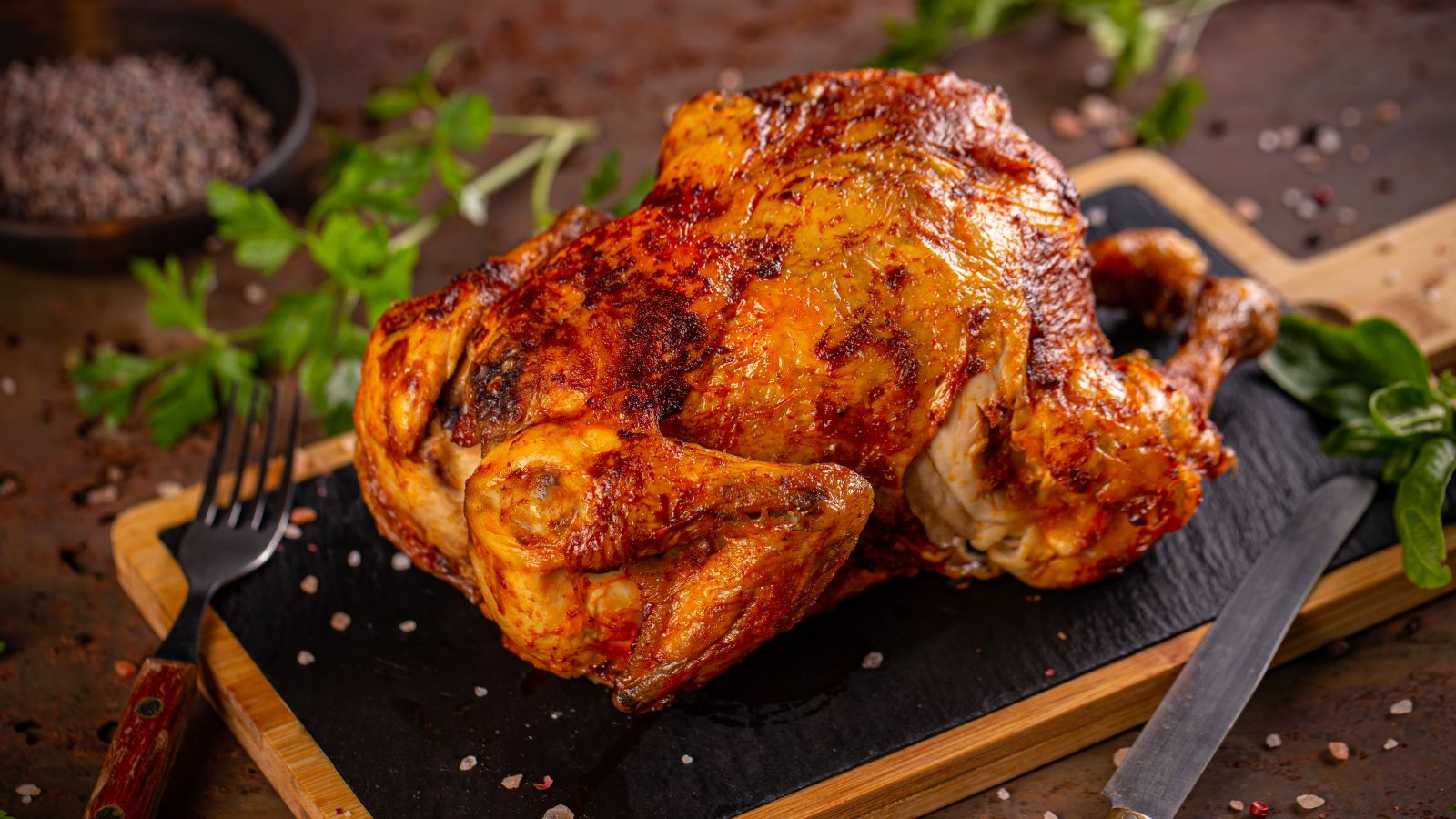Many a family has been saved by the rotisserie chicken.
Who among us hasn’t swung through the grocery store on a desperate Wednesday night, grabbing the chicken from under the warming lights and a bag of salad to bring home and turn into dinner?
But is that rotisserie chicken as healthy for your family as one you would roast yourself in the oven? We asked registered dietitian Jamie Allers, MS, part of Hartford HealthCare’s Digestive Health Institute.
A rotisserie chicken has more in common with a roasted chicken than you might think.
“Nutritionally, it will be comparable. A rotisserie chicken will have similar nutrients to one you roast,” says Allers. “Similar protein, iron. The main difference is the amount and type of any additives.”
Some stores “inject the chickens with a solution, which might contain added salt, sugar, various natural flavorings,” Allers explains. “They add these other compounds – gums, stabilizers – to add flavor and moistness and make it look appetizing.”
Not sure what additives to look out for? Allers has this tip for label sleuths.
“If there are no additives, the ingredient list will simply read: ‘chicken,’” she says.
> Related: Nutrition Smack Down: Which Protein Is the Healthiest?
A rotisserie chicken is better than some of the other alternatives.
Even with additives, a rotisserie chicken is a far healthier choice than a fast food run, says Allers.
“It’s still lower in fat and calories than fast food. It’s serving its purpose – it’s fast, but it can still help you create a balanced meal. Add some frozen broccoli and brown rice or sweet potato, and it becomes far more balanced than fast food.”
> Want more health news? Text StartHere to 85209 to sign up for text alerts
But the best way to eat healthy in a time crunch? Plan ahead.
“Try to prepare meals ahead of time whenever possible,” says Allers. “That way, when you’re busy, you’ll have a healthy and delicious option at home, ready to go.”
And the great news is, a whole chicken is versatile and cost effective.
“When you have time, try roasting a chicken in your oven. And while it cooks, prep fresh veggies for the week, or other meals like quick breakfasts or bagged lunches,” Allers suggests.
You can shred the chicken, use it in a stir fry or add it to salads. Then use what’s left to make broth, soup or stock to freeze.



